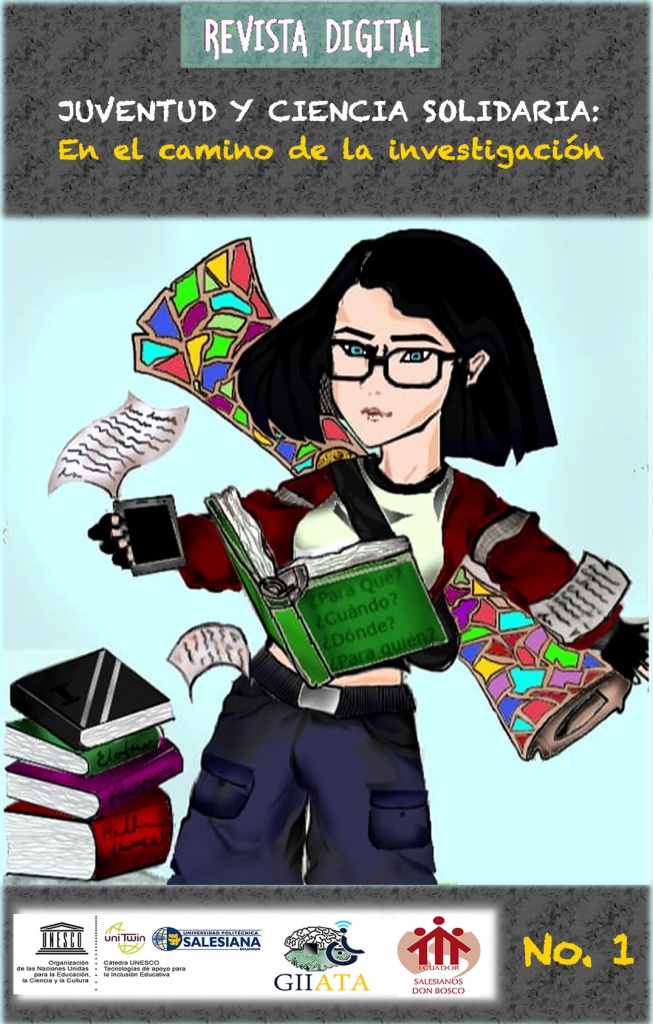Edición N°1 – Artículo 07
Mecedora Inteligente para bebés de 0-10 meses
Autoras: Camila Arcentales, Isabel Guzmán, Wendy Ramón, Doménica Riera (Unidad Educativa Técnico Salesiano)
Resumen
El propósito de nuestro proyecto es elaborar una mercedora que facilite el cuidado y a la vez ayude en la distracción del bebé mientras se encuentra descansando. La mecedora inteligente es un sistema que se prescribe para su uso en bebés de 0 a 10 meses, y este proyecto nace para ayudar a solucionar dos problemas: el primero es que el desarrollo integral del niño depende de la cantidad y calidad de los estímulos que recibe, en particular, la estimulación sensorial contribuye a que este desarrollo se dé en forma armónica (Albalat, 2010); el segundo problema radica en las actividades diarias que una madre de familia tiene que hacer en el hogar y que en muchas ocasiones no puede realizarlas ya que debe estar pendiente del bebé. Nuestro proyecto va a tratar de ayudar con estos problemas con los implementos instalados en la mecedora, como el espacio de luces secuenciales y el carrusel de cuna que ayudará a la estimulación sensorial. También con sensores ultrasónicos que darán la alerta cuando el bebé se despierte, ya que estos captan el movimiento del bebé, todo será controlado mediante la aplicación de Android. Quedamos con gran satisfacción al ver el resultado al final de nuestro proyecto y el beneficio que aportaría a las madres de familia. Pudimos comprobar que nuestros objetivos se cumplieron mediante la realización de pruebas con dos bebés con el permiso de sus padres, de 3 y 6 meses, observamos que la mecedora inteligente calmo su llanto. La secuencia de luces atrajo la atención por los colores haciendo que los bebés se relajen con todo esto p dimos reconocer que la mecedora inteligente está lista y es apta para bebés de 0 a 10 meses
Palabras clave: estimulación sensorial, sensores ultrasónicos, Android.
Abstract
The purpose of our project is to create a rocking chair that facilitates care while also helping to distract the baby while resting. The smart rocking chair is a system prescribed for use in babies aged 0 to 10 months, and this project was born to address two problems: first, a child’s overall development depends on the quantity and quality of stimuli they receive, with sensory stimulation contributing to harmonious development (Albalat, 2010); second, the daily activities a mother must perform at home often cannot be completed because she must attend to the baby. Our project aims to address these issues with features installed in the rocking chair, such as sequential lights and a crib mobile to aid sensory stimulation, as well as ultrasonic sensors to alert when the baby wakes by detecting movement. Everything is controlled via an *Android* application. We were very satisfied with the final result of our project and the benefits it would provide to mothers. We confirmed that our objectives were met by testing the chair with two babies, aged 3 and 6 months, with their parents’ permission. We observed that the smart rocking chair soothed their crying. The sequence of lights attracted their attention with colors, helping the babies relax. Based on this, we concluded that the smart rocking chair is ready and suitable for babies aged 0 to 10 months.
Keywords: sensory stimulation, ultrasonic sensors, Android.
Edición N°1
Fecha de publicación: 07 diciembre del 2018.
This work is licensed under a Creative Commons Attribution-NonCommercial-ShareAlike 4.0 International License.
The Universidad Politécnica Salesiana of Ecuador preserves the copyrights of the published works and will favor the reuse of the works. The works are published in the electronic edition of the journal under a Creative Commons Attribution/Noncommercial-No Derivative Works 4.0 Ecuador license: they can be copied, used, disseminated, transmitted and publicly displayed.
The undersigned author partially transfers the copyrights of this work to the Universidad Politécnica Salesiana of Ecuador for printed editions.
It is also stated that they have respected the ethical principles of research and are free from any conflict of interest. The author(s) certify that this work has not been published, nor is it under consideration for publication in any other journal or editorial work.
The author (s) are responsible for their content and have contributed to the conception, design and completion of the work, analysis and interpretation of data, and to have participated in the writing of the text and its revisions, as well as in the approval of the version which is finally referred to as an attachment.
- Estimulación visual (2015) https://goo.gl/88T1iS
- KEYENCE. (2017, 18 junio). ¿Qué es un sensor ultrasónico? Recuperado 23 mayo, 2018, de https://goo.gl/hct45N
- Martín Sánchez. (2013). Deformidades de la columna vertebral. 2017, de Pediatría Integral Sitio web: https://goo.gl/BPMbwa
- Wikipedia. (2017, 23 mayo). Estimulación temprana. Recuperado 23 mayo, 2018, de https://goo.gl/VP6jir


